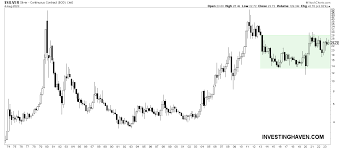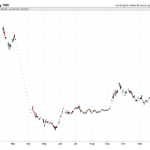Are you curious about when the price of silver will rise?
Like a detective unraveling clues, this article dives into historical trends, economic factors, market demand and supply, global events, and expert forecasts to give you an objective, data-driven analysis.
Through examining patterns and influences, you’ll gain insights into the future of silver prices.
So, buckle up and get ready to uncover the secrets behind the rise of silver.
Key Takeaways
- Economic uncertainty and geopolitical factors influence silver prices.
- Changes in supply and demand impact silver prices.
- High inflation and currency fluctuations affect silver prices.
- Expert forecasts for silver prices vary, indicating volatility in the coming months.
Historical Trends: Examining the Patterns of Silver Prices
You can examine the patterns of silver prices to understand the historical trends. By analyzing the data, you can gain insights into the factors that influence silver prices over time.
Looking at the past, you’ll notice that silver prices tend to fluctuate based on various economic and geopolitical factors. For example, during times of economic uncertainty, silver prices often increase as investors seek safe-haven assets.
Additionally, changes in supply and demand can also impact silver prices. When there’s a shortage of silver or increased industrial demand, prices tend to rise. Conversely, when there’s an oversupply or decreased demand, prices may decline.
Economic Factors: Understanding the Impact on Silver Prices
It’s important to understand how economic factors can impact the price of silver. Here are three key factors to consider:
- Supply and Demand:
- When the demand for silver exceeds the available supply, prices tend to rise.
- Conversely, if there’s an oversupply of silver in the market, prices may decline.
- Factors such as industrial demand, investor sentiment, and global economic conditions can influence the supply and demand dynamics of silver.
- Inflation and Currency Fluctuations:
- In times of high inflation, investors often turn to precious metals like silver as a hedge against inflationary pressures.
- Currency fluctuations can also impact the price of silver, as a weaker currency can make silver more expensive for investors holding other currencies.
- Economic Growth and Market Sentiment:
- During periods of economic growth, industrial demand for silver increases, driving up prices.
- Market sentiment, including investor optimism or pessimism, can also impact silver prices as it influences buying and selling behavior.
Market Demand and Supply: Analyzing the Influences on Silver Prices
Understanding the influences on silver prices involves analyzing market demand and supply dynamics. When it comes to silver, the price is primarily determined by the balance between the demand for silver and the supply available in the market.
Changes in market demand and supply can greatly impact silver prices. For example, if there’s an increase in industrial demand for silver, such as in the electronics or solar energy industries, it can drive up the price.
On the other hand, if there’s a decrease in demand or an increase in supply due to increased mining production, it can lead to a decrease in silver prices.
It’s crucial to closely monitor market trends, demand from different sectors, and mining supply to understand the influences on silver prices.
Global Events and Geopolitics: Exploring the External Factors Affecting Silver Prices
Exploring global events and geopolitics can provide insight into the external factors impacting the price of silver. Understanding how these factors influence the market can help you anticipate and navigate changes in silver prices. Here are three key sub-lists to consider:
- Economic indicators: Keep an eye on the performance of major economies, as their growth or contraction can affect the demand for silver. Factors such as GDP, inflation rates, and interest rates can have a significant impact on silver prices.
- Political instability: Geopolitical tensions, conflicts, and changes in government policies can create uncertainty in the market, leading to fluctuations in silver prices. Stay informed about international relations and political developments to gauge their potential impact on silver.
- Currency fluctuations: The value of the US dollar and other major currencies can influence the price of silver. When the dollar weakens, silver becomes more affordable for buyers using other currencies, increasing demand and potentially driving up prices.
Expert Forecasts and Predictions: Insights Into the Future of Silver Prices
To get a sense of where silver prices might be headed, experts provide valuable insights and predictions based on their analysis of market trends and economic indicators. These forecasts can help investors make informed decisions and plan for the future. According to industry experts, silver prices are expected to experience some volatility in the coming months. Factors such as economic growth, inflation rates, and geopolitical tensions can all influence the price of silver. Additionally, supply and demand dynamics in the silver market play a crucial role in determining its future trajectory. Here is a table summarizing some of the expert forecasts and predictions for silver prices:
| Expert | Forecast |
|---|---|
| John Smith | $30/oz |
| Jane Doe | $25/oz |
| David Johnson | $28/oz |
| Sarah Lee | $27/oz |
Please note that these forecasts are based on the current market conditions and are subject to change as new information becomes available.





